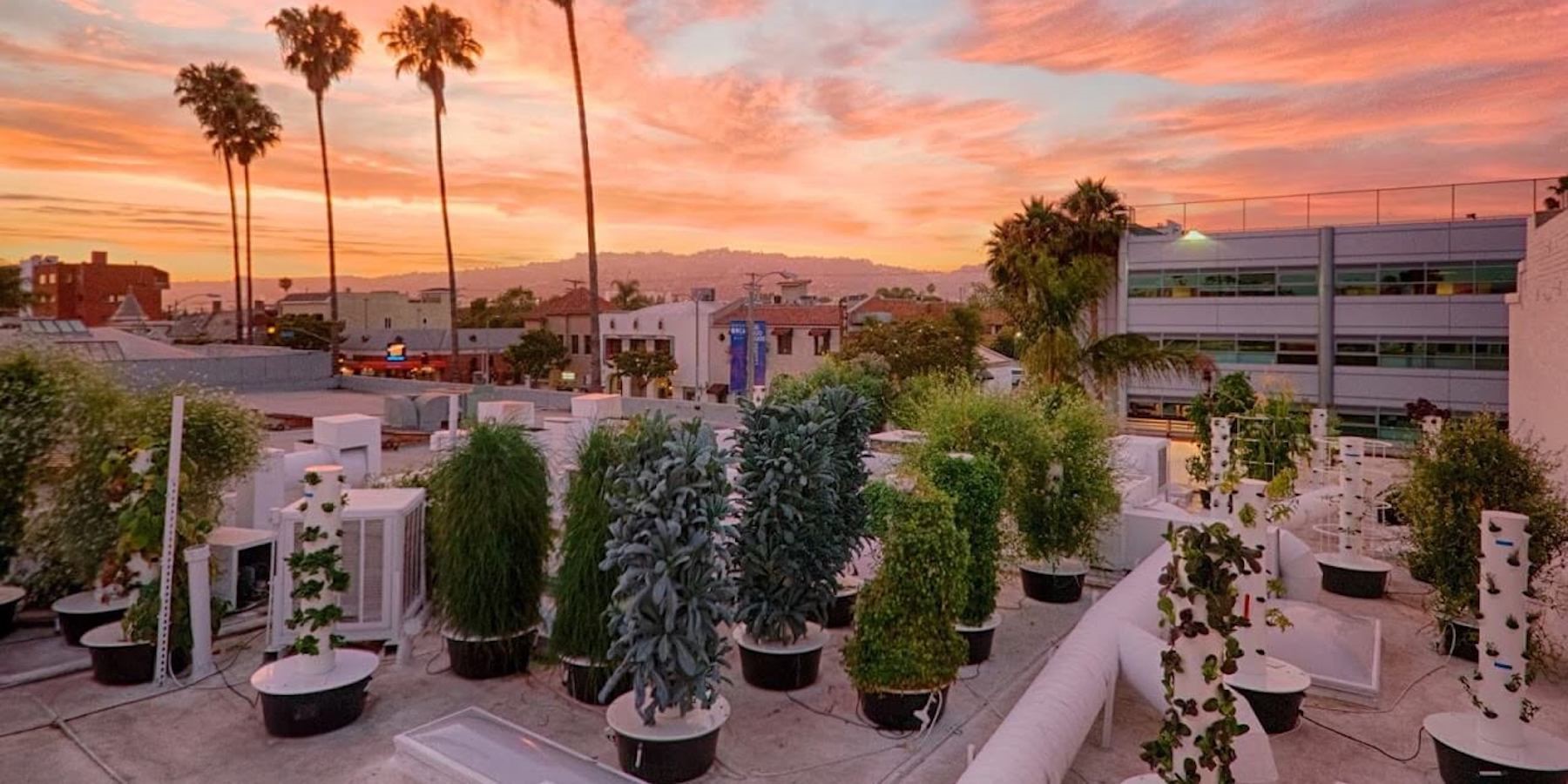Mar 14, 2018
Why Rooftop Farming Is the Best Solution for Smart Urban Agriculture

By James Coffman, Director, Commercial Tower Garden Division
We lose more than 50 acres of American farmland to urban development every hour. And in that same amount of time, our population grows by 240 people.
Less land to grow food + more mouths to feed = big problem.
But, increasingly, forward-thinking farmers are eschewing the confines of conventional agriculture and growing on what’s traditionally been considered unusable space: city rooftops.

3 Reasons Rooftop Farming Is a Fantastic Idea
Besides helping meet the growing demand for food production, rooftop farms offer the following benefits:
· Enhance the urban landscape (and human well-being). By cultivating lettuces, kale, arugula, and other crops, rooftop farms literally make cities greener. And studies have found that exposure to nature and vegetation provides an array of psychological benefits, from decreased anxiety to increased productivity.
· Make cities more eco-friendly. Bare roofs in cities absorb and then radiate heat — a phenomenon known as the “heat island effect.”4 This increases energy usage and contributes to the poor air quality that often plagues big cities. But rooftop farms help cool buildings, ultimately reducing carbon emissions. And by growing food in the communities they serve, rooftop farmers lessen the environmental impact of food transportation, as well.
· Increase the availability of real, healthy food. When farmers grow inside — or better yet, on top of — the concrete jungles and food deserts that many of us inhabit, more people have access to fresh, wholesome, and affordable food. And because it travels fewer food miles, hyper-local produce is often healthier and tastier, too.
5 Revolutionary Rooftop Farms
With so many advantages, it’s no surprise rooftop farms are sprouting up all over the U.S. Here are just a few inspiring examples:
1. Altius Farms in Denver, Colorado

Launching this year, Altius Farms will be the largest vertical, aeroponic rooftop greenhouse in the U.S. With 343 Tower Gardens, the farm plans to grow fresh food for Denver restaurants, food services, markets, and residents.
The rooftop farm will also offer tours, educational classes, special events, and on-the-job training for veterans and local youth.
2. Bell Book & Candle in Manhattan, New York

One of the first rooftop-to-restaurant farms in the U.S., Bell Book & Candle fuels its seasonal fare with 65 Tower Gardens in only 2,500 sq. ft.
Restaurant patrons enjoy a variety of fresh herbs, vegetables, and fruits just six flights of stairs below where it was grown and harvested by chef John Mooney and his team.
3. Rouses Supermarket in New Orleans, Louisiana

Imagine if you could to the grocery store and buy herbs that were grown on-site. Talk about fresh!
In 800 sq. ft., Roots on the Rooftop — America’s first roof-to-supermarket aeroponic farm — makes this dream a reality for Rouses shoppers in New Orleans.
4. Step Up on Vine in Hollywood, California

This housing facility for the homeless provides both shelter and — with 25 rooftop Tower Gardens — nourishment for its tenants.
Step Up on Vine is also LEED-certified and uses solar power, making it prime example of eco-friendly architecture.
5. The University of Colorado in Boulder, Colorado

CU Boulder student lunches have never been fresher. And that’s because they now include ingredients from a 3,000 sq. ft. smart greenhouse full of 140 Tower Gardens.
In view of the Rocky Mountains, the CU rooftop farm boasts several high-tech features, including sensors that monitor temperature, humidity, and lighting. Farm Manager Alex Macmillan and his team use this real-time data to optimize fans and LEDs so that they may achieve the best growing conditions possible.
How to Start Your Own Rooftop Farm

Restaurants, schools, housing complexes, and even supermarkets — it seems as though almost everyone can benefit from a rooftop farm! That being said, obstacles do exist.
Space is limited, for example. And soil is heavy. So, a roof must be structurally sound enough to bear the weight. (Plus, you have to get the soil up there in the first place.)
Which is why, as you may have noticed, all of the farm examples above use Tower Garden — an aeroponic system that grows plants with only water and nutrients. Besides being soil-free, and therefore lighter, Tower Garden is a vertical system, allowing you to grow 10 times as many plants as a traditional row crop layout.
These are just a few of the many reasons Tower Garden is well suited for rooftop farming — and urban farming in general.
At Tower Farms, we’ve helped hundreds of farmerpreneurs plan, set up, and even finance rooftop Tower Garden operations. Because we’re on a mission to make real, healthy food available to all.
If you’re interested in starting your own rooftop farm, we’d love to chat with you!
James Coffman spoke at Agritecture’s 2018 AgLanta Conference.
Want to get more great Agritecture content? Check out our new Digital Conference Series.
Or, talk to us about your urban farming vision.

